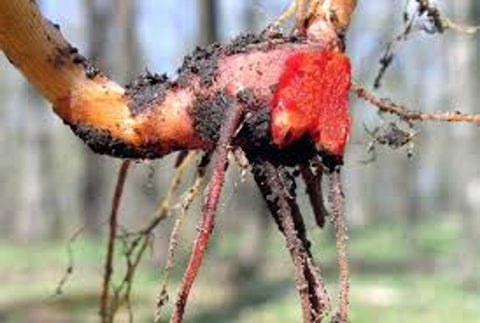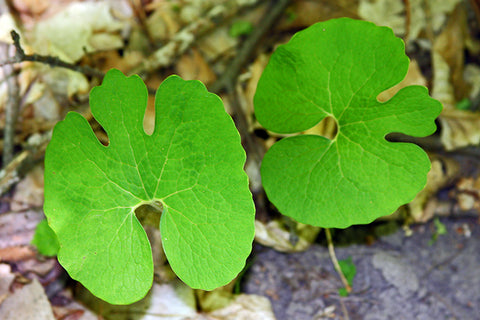About Bloodroot
The bloodroot (Sanguinaria canadensis) is a beautiful native perennial wildflower that emerges in the spring with a pair of folded white petals atop a cupped leaf. Native to eastern North America, bloodroot grows in rich, deciduous forests and often signals the arrival of spring in shady garden spots. Indigenous communities have used the sap of its rhizome, which is red-orange when cut, for dyeing and healing.
Is Bloodroot a spring ephemeral?
Bloodroot is a spring ephemeral that grows best in full shade to partial shade and produces blooms that last for roughly a week. In early spring, a rolled-up leaf forms a tight grip around a single flower bud. As the bud opens, eight to twelve white petals reveal a central disk of golden-yellow stamens. Although the flowers are short-lived, they are produced abundantly and the foliage, which unfurls in the center of the plant following bloom, is large and rounded with deep lobes and attractive through summer.
Its growth strategy of early bloom and foliage before the tree canopy shades the forest floor has earned bloodroot the designation “ephemeral”. Come early summer, the plant’s foliage fades and dies back as the plant goes dormant, often disappearing into the soil until the next spring. Bloodroot is therefore recommended for planting along with slower-emerging perennials like ferns, hostas, and wild ginger that can occupy the space that it leaves behind.
Bloodroot is a beneficial wildflower for native bees, beetles, and flies that need a source of pollen during the spring.
As bloodroot lacks nectar, its pollen is an especially useful food source for foragers. This early-season nectar-forager is ant-dispersed, meaning that ants will carry away the seed after the fruit matures and harvests the elaiosome – the fleshy appendage that is high in oils and fats – as food for themselves and their larvae.
Bloodroot prefers humus-rich, moist but well-drained soil and can make a lovely display when planted in drifts beneath deciduous trees. As a woodland native, it is also appropriate for naturalized gardens and meadows. The plant requires little care once established other than occasional watering.




